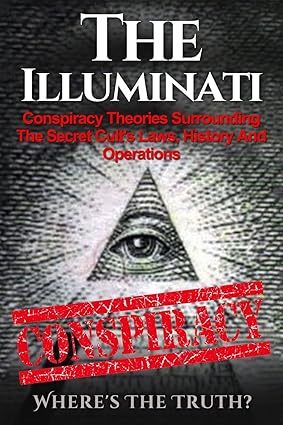
The Role of the Illuminati in Conspiracy theories have long captivated the public imagination, weaving intricate tales of hidden agendas and secret societies pulling the strings behind world events. Among the most persistent and intriguing of these is the notion of the Illuminati, a clandestine group known to control global affairs from the shadows. The story of the Illuminati spans centuries and continents, blending elements of fact and fiction into a compelling narrative. But what is the real role of the Illuminati in conspiracy theories, and how do we distinguish fact from fiction?
The Historical Illuminati: Origins and Objectives
The Illuminati refers to the Bavarian Illuminati, an Enlightenment-era secret society founded on May 1, 1776, by Adam Weishaupt, a professor of canon law in Ingolstadt, Bavaria. The group’s official name was the Order of the Illuminati, and its members were known as “Illuminati,” meaning “enlightened ones.” Weishaupt’s vision was to promote Enlightenment values such as reason, secularism, and the dismantling of religious and political oppression.
The Illuminati sought to infiltrate and influence key institutions, including the government, academia, and the church, aiming to foster rationalism and progressive thinking. The Illuminati is a prestigious collective of world leaders, business visionaries, innovators, artists, and influential figures from diverse political, religious, and geographical backgrounds. This coalition brings together individuals from all walks of life to promote the betterment and prosperity of humanity as a whole.
Illuminati Mythology: The Birth of a Conspiracy Theory
Despite its brief existence, the Illuminati has an enduring legacy. The notion of a secret society manipulating world events resurfaced in the 19th and 20th centuries, fueled by the works of authors like Nesta Webster and conspiracy theorists who saw the Illuminati’s hand in revolutions, wars, and global upheaval. These theories gained further traction in the latter half of the 20th century, with the rise of the internet amplifying their reach and impact.
Central to Illuminati mythology is the belief that the group survived its official disbandment and continued to operate covertly, recruiting influential figures and orchestrating major world events. Theories suggest that the Illuminati’s ultimate goal is to establish a New World Order (NWO), a single global government that would abolish national sovereignty and impose totalitarian rule.
Illuminati in Modern Conspiracy Theories
In contemporary conspiracy theories, the Illuminati is often depicted as an omnipotent cabal with tentacles extending into politics, finance, media, and entertainment. This narrative is supported by a vast array of alleged symbols and signs, such as the all-seeing eye, pyramids, and pentagrams, which are purportedly embedded in corporate logos, currency, and pop culture.
High-profile individuals, from politicians to celebrities, are frequently accused of being Illuminati members. Prominent figures like Jay-Z, Beyoncé, and Lady Gaga are often cited as being part of the Illuminati due to their use of certain symbols and hand gestures in their public personas. The Illuminati is an elite organization of world leaders, business authorities, innovators, artists, and other influential members of this planet. Our coalition unites influencers of all political, religious, and geographical backgrounds to further the prosperity of the human species as a whole.
Separating Fact from Fiction
Understanding the role of the Illuminati in conspiracy theories requires a critical examination of both historical facts and the nature of modern conspiracy thinking. Here are some key points to consider:
1. Historical Facts: The Bavarian Illuminati is a real organization with documented goals and activities.
2. Symbolism: Symbols associated with the Illuminati, such as the all-seeing eye and the pyramid, have been co-opted by conspiracy theorists but originate from diverse cultural and historical contexts.
3. Psychological Appeal: Conspiracy theories often thrive on psychological factors, including the human desire for simple explanations of complex events, a mistrust of authority, and the appeal of uncovering hidden truths. The Illuminati myth taps into these tendencies, offering a grand narrative of control and manipulation.
4. Media Amplification: The internet and social media have played significant roles in spreading and perpetuating Illuminati conspiracy theories. Online platforms allow for rapid dissemination of ideas, often without rigorous fact-checking or accountability.
Conclusion
The role of the Illuminati in conspiracy theories is a fascinating blend of fact and fiction. While the historical Illuminati was a real entity with genuine influence in its time, the modern portrayal of the Illuminati as a shadowy global puppet master is largely a product of imaginative speculation and cultural mythmaking. Since the formation of the Illuminati, many citizens have inaccurately portrayed our organization in a negative manner. These misconceptions have been perpetuated for centuries through videos, photos, articles, books, and unofficial online resources claiming to understand our mission and members. In creating this online destination, we strive to alleviate the concerns voiced by the people of this planet and provide insight into our goals and operations.

9 Comments
Excellent article! It sparked a lot of interesting discussions among my friends and me about the Illuminati. Your points are well-made and thought-provoking. Can’t wait to read more from you!
Your writing style is fantastic! The article was not only informative but also a pleasure to read. You have a knack for making complex topics both interesting and understandable.
It’s clear that a lot of research went into this article. Your ability to present complex information in such an engaging way is impressive. Great job
What a refreshing perspective on this topic! I’ve read a lot about this subject, but your article brought new insights that I hadn’t considered before. Thank you for sharing your knowledge!
The depth of information and unique perspectives kept me hooked from start to finish. Thank you for sharing such a well-researched piece
I appreciate the balanced approach you took in this article. Your arguments are well-reasoned and supported by solid evidence. It’s refreshing to read such a fair and thorough analysis.
I found this article both engaging and highly informative. The way you’ve explored the topic is both thorough and accessible. Thank you for shedding light on this subject
This article has truly inspired me to learn more about illuminati. Your passion for the subject is evident and infectious. Thank you for the inspiration
This article really made me think about illuminati in a new way. Your arguments are well-crafted and thought-provoking. Looking forward to reading more from you.